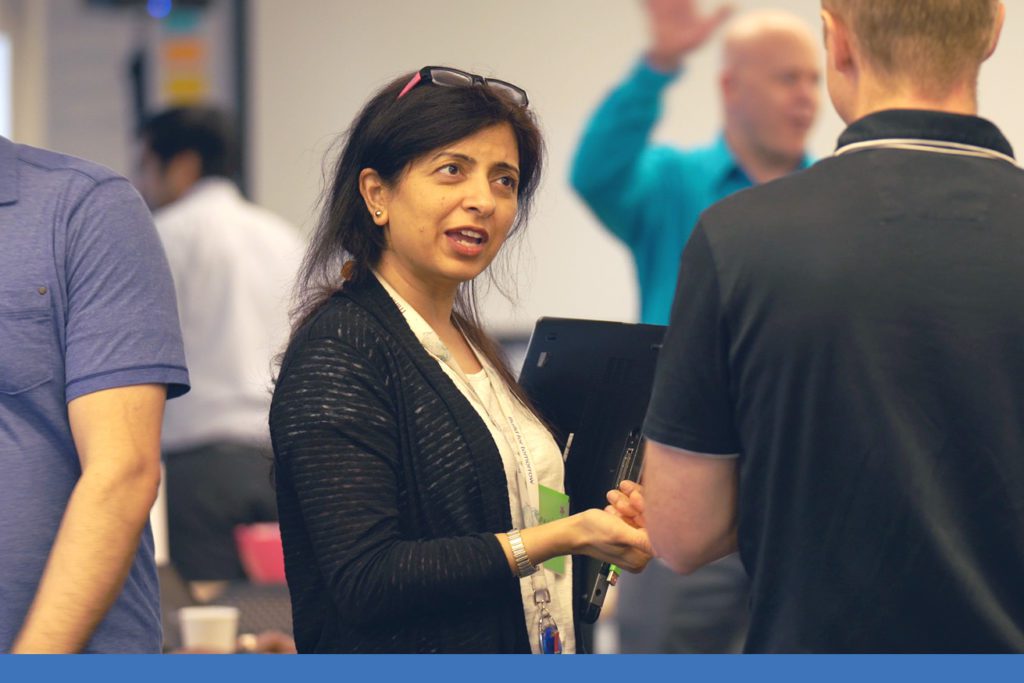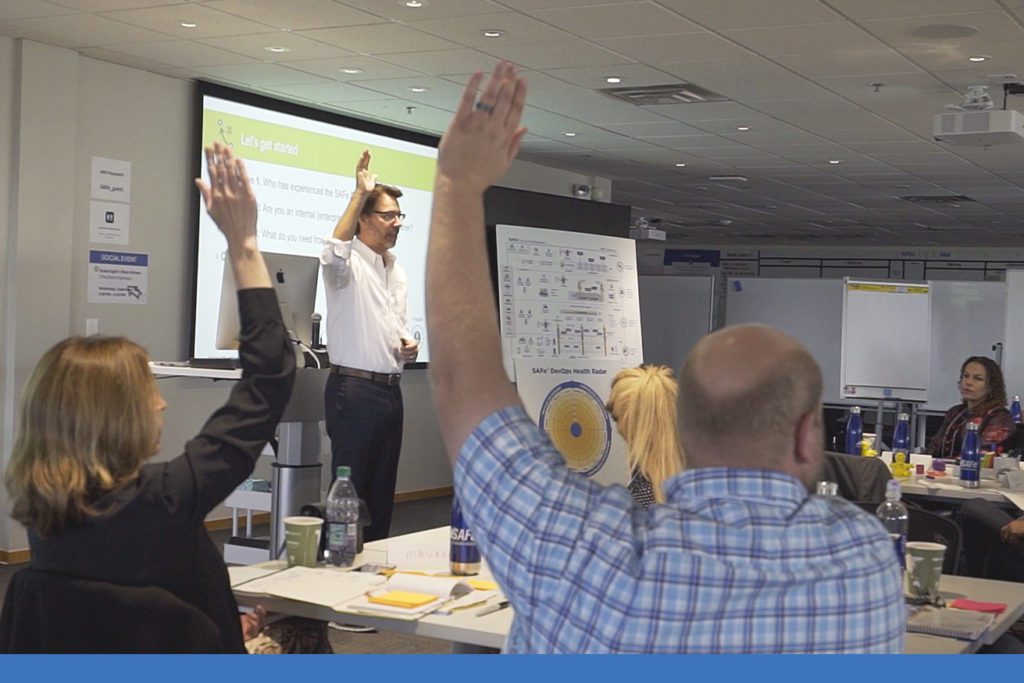
The Value Stream and Agile Release Train (ART) identification workshop are some of the most critical steps to generate meaningful results from your SAFe transformation. That’s because it enables you to respond faster to customer needs by organizing around value. This workshop can also be the hardest step. It’s complex and politically charged, so organizations often skip or mismanage it.
A savvy change agent would invest in the organizational and cultural readiness to improve the chances of its success. Attempting to shortcut or breeze through change readiness would be the same as putting your foot on the brake at the same time you’re trying to accelerate. Get this workshop right, and you’ll be well on your way to a successful SAFe implementation.
Why Is It So Difficult?
Aside from the complex mechanics of identifying your value streams, there is also a people component that adds to the challenge. Leaders are often misaligned about the implications of the workshop, and it can be tough to get the right participants to attend. For example, a people leader could soon realize that ARTs may be organized in a way that crosses multiple reporting relationships, raising the concern of their direct reports joining ARTs that don’t report to them.
In reflecting on my battle scars from the field, I’ve distilled my advice to three steps to prepare the organization for a successful workshop.
Step 1: Engage the right participants
The Value Stream and ART identification workshop can only be effective and valuable if the right audience is present and engaged. This is the first step to ensure the outcome of the workshop solves for the whole system and breaks through organizational silos.
“… and If you can’t come, send no one.” —W. Edwards Deming
The required attendees will fall into four broad categories:
- Executives and leaders with the authority required to form ARTs that cut across silos.
- Business owners and stakeholders who can speak to the operational activities of the business, including ones with security and compliance concerns.
- Technical design authorities and development managers who can identify impacted systems and are responsible for the people who are working on them.
- Lean-Agile Center of Excellence and change agents supporting the SAFe implementation and facilitating the workshop.
Use some guiding questions to identify the right audience for the workshop within your organization. Are the participants empowered to make organizational decisions? Do the participants represent the whole value stream? Is the number of attendees within a reasonable range to make effective decisions?
Step 2: Build leadership support and pre-align expectations
To support engagement and address potential resistance, I recommend performing a series of interactions with leaders in advance of the workshop. In such interactions, the change agent would socialize a crisp and compelling case for change in the organization, supporting the “why” behind running the workshop.
The change agent needs to be prepared to address leader trepidation about the possibility of having their reporting-line personnel on ARTs that they don’t fully own. Most compelling is a data-based case made by performing value-stream mapping with real project data to expose the delays in value delivery due to organizational handoffs.
Interaction opportunities can include one-on-one empathy interviews, attending staff meetings, internal focus groups, and overview sessions open to all workshop participants.
I highly advise setting expectations with leaders in advance of the workshop. This will help them understand the workshop implications, help identify potential misalignment or resistance, and coach them in how to signal support for the workshop purpose.
The following are useful expectations to set with the participants in advance to help shape how they view the upcoming workshop:

- Allow the designs to emerge during the session. This is meant as a collaborative workshop.
- Expect to be active and on your feet during the session, actively contributing to the designs.
- Be present and free up your schedule for the duration of the workshop as key organizational decisions are being made.
- Alleviate the anxiety of broad, big-bang change by clarifying that they get to influence the implementation plan and timing to launch the ARTs.
- Address the misconception about organizational change by explaining that ARTs are “virtual” organizations, and that reporting lines need not be disrupted.
Step 3: Prepare the workshop facilitators
A successful Value Stream and ART identification workshop will have the main facilitator, ideally someone with experience running this workshop. Additionally, you’ll need a facilitator, typically an SPC, per every group of six to eight attendees. Prior to the workshop date, schedule several facilitator meetings to prepare and align them on the game plan. This will go a long way in helping your facilitators project competence and confidence during the workshop. Discuss the inherent challenges and potential resistance, and how the facilitators can best facilitate such moments. Share insights on change readiness based on the leadership interactions and empathy interviews. Finally, prepare a shared communication backchannel for facilitators, and build in sync points during the event to ensure alignment across the groups.
While these simple steps and readiness recommendations don’t necessarily guarantee a successful workshop, they’re a great starting point. You’ll still need to understand the mechanics of identifying value streams. This is what Adam will cover in the next post in our value stream series. Look for it next week.
In the meantime, check out the new Organize Around Value page on the SAFe Community Platform.
About Deema Dajani

Deema Dajani is a Certified SAFe® Program Consultant Trainer (SPCT).
Drawing on her successful startup background and an MBA from Kellogg Northwestern University, Deema helps large enterprises thrive through successful Agile transformations. Deema is passionate about organizing Agile communities for good, and helped co-found the Women in Agile nonprofit. She’s also a frequent speaker at Agile conferences and most recently contributed to a book on business agility.
